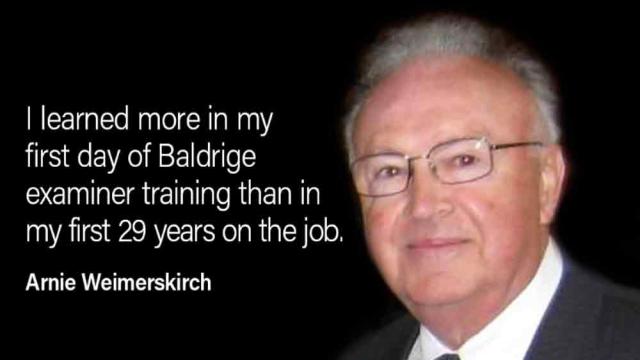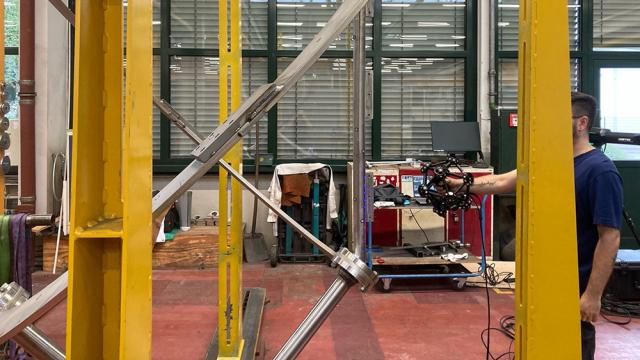All Features
Quality Digest
(Fluke: Everett, WA) -- Morehouse Instrument Co. is a leader in torque and force calibration. The company provides government and private labs across the country with reliable calibration equipment, services, and training.
Based in York, Pennsylvania, Morehouse has been in the calibration business…

Colin Strachan
Most industrial leaders strive to be more proactive and data-driven. But getting there can feel overwhelming, especially if your teams spend much of the day firefighting.
Maintenance maturity depends on the quality of your data, how effectively you use them, and the processes and culture that…

Donald J. Wheeler
Define, measure, analyze, improve, control, goes the mantra used to carry out improvement projects in many companies. In various books, these steps get slightly different interpretations. But the overall outline is still characterized by DMAIC. This article will show a proven way to simplify and…

Harry Hertz
In an earlier blog, I introduced you to Arnie Weimerskirch, a former vice president of corporate quality at Honeywell and the former chair of the Baldrige Judges Panel. I recently had lunch with him and learned how he got involved with the Baldrige Program and how it influenced his career. I think…

Gleb Tsipursky
In a rapidly evolving technological landscape, generative artificial intelligence (gen AI) has emerged as a transformative force, reshaping industries and redefining operational paradigms. It offers unprecedented opportunities for organizations to enhance efficiency, innovation, and competitiveness…

Prerna Sudera
Ensuring that automotive components meet the highest quality standards is critical to vehicle safety and performance. Metals and protective coatings used in automotive manufacturing must withstand extreme conditions such as mechanical stresses, corrosion, and wear during a vehicle’s lifespan. Here…

Mike Figliuolo
Nobody likes change. I know if you do anything that changes my routine in the morning, my whole day is whacked. We all hate change. Heck, most of us hate getting change at the grocery store because of all those coins.
As a leader, though, your job is to get others to want to change.
Getting other…

Jones Loflin
A question I’m getting asked a lot these days is, “What’s a quick way for me to improve my ability to focus?” I have several suggestions. One of the new ones I’m working on is connected to a principle from lean management. It’s called the 3S’s—Sweep, Sort, Standardize. See if it doesn’t have…

ISO
Imagine you’re stuck in traffic during rush hour, frustrated and late, when suddenly the lights ahead adapt to the flow of traffic, easing the congestion in no time. This is the promise of intelligent transportation systems (ITS), an interconnected network of technologies designed to optimize the…

Harish Jose
In this article, I’m looking at the brilliant philosopher Ludwig Wittgenstein’s “The Beetle in the Box” analogy.
Wittgenstein rose to fame with his first book, Tractatus Logico-Philosophicus, in which he proposed the idea of a picture theory for words. Very loosely put, words correspond to objects…

CIH Equipment
Industrial hygiene equipment plays a critical role in ensuring workplace safety by monitoring airborne contaminants, noise levels, and other hazardous conditions. However, accurate readings depend on regular industrial hygiene equipment calibration to maintain precision and compliance with…

Cadrex
The semiconductor manufacturing industry is undergoing rapid transformation driven by technological advancements, increased demand for AI and electric vehicle (EV) chips, and geopolitical shifts. Needless to say, the semiconductor industry and the companies that fabricate the equipment used in the…

Creaform
For more than 90 years, EKATO Rühr- und Mischtechnik GmbH has specialized in process analysis, engineering, scale-up manufacturing, and assembly of agitator technologies, continually developing solutions to meet the needs of process-oriented industries. Supporting procedures such as homogenizing,…

Adam Grant
Nano Tools for Leaders—a collaboration between Wharton Executive Education and Wharton’s Center for Leadership and Change Management—are fast, effective tools that you can learn and start using in less than 15 minutes, with the potential to significantly improve your success and the engagement and…

Christine Schaefer
‘Every organization has countless opportunities for improvement, but only a few points—what we call constraints or bottlenecks—govern the pace and performance of the entire system,” says Rami Goldratt, who gave the closing keynote presentation at the Baldrige Performance Excellence Program’s 36th…

Thwing-Albert Instrument Company
Quality control workflows are only as effective as the machinery they rely on. Ensuring functionality requires understanding what to test and how to measure these factors. Consequently, choosing appropriate material testing equipment is a crucial—if overlooked—step in the quality assurance process…

Silke von Gemmingen
In areas such as high-precision metalworking, accuracy is nonnegotiable. This includes the automotive industry and its suppliers, which are in crisis in Germany for several reasons. The industry is under enormous pressure to deliver products of impeccable quality while reducing operating costs (for…

Stefanie Koperniak
For more than a decade through a collaboration managed by MIT.nano, MIT and Tecnológico de Monterrey (Tec), one of the largest universities in Latin America, have worked together to develop innovative academic and research initiatives with a particular focus on nanoscience, nanotechnology, and,…

Creaform
Hawthorne High School of Manufacturing & Engineering in Los Angeles is not your typical high school program. Led by program coordinator Lucas Pacheco, it’s a hub where young minds are immersed in advanced manufacturing and engineering design courses. With a hands-on curriculum covering multi-…

Elisa Duquet
The semiconductor industry is one of the most complex, dynamic, and technologically advanced sectors in the world. It plays an essential role in shaping modern life, serving as the foundation for everything from smartphones and MRI machines to kitchen appliances and space shuttles. In today’s…

Gleb Tsipursky
Generative AI (gen AI) is fundamentally transforming industries, reshaping the way professionals innovate, create, and solve problems. These systems, capable of generating text, images, music, and complex solutions, aren’t just tools—they’re catalysts for a paradigm shift in the professional and…

John O'Kelly
Warehouses are the backbone of supply chains, ensuring that goods move efficiently from suppliers to consumers. However, the physical demands of warehouse work—heavy lifting, repetitive motions, and prolonged standing—can take a toll on employees, leading to fatigue, injuries, and long-term strain…

Mike Figliuolo
Email is the bane of our existence. Sure, it’s awesome for funny cat videos, chain letters, and getting awesome blogs like this one (see what I did there?), but it can also cause massive amounts of stress and waste tremendous amounts of time.
One of the first things I do when I take on a new…

NIST
Every year, employers across the United States open their doors to curious kids, inviting them to experience a day in the life of their parents at work. On April 25, 2025, Take a Child to Work Day and Beyond will give children whose parents work in manufacturing a fun opportunity to explore…

Alexander Kramida
Nearly everything we know about the universe comes from light. Cosmologists learn about the universe by studying light from faraway stars and comparing what it shows us to the light of the same atoms here on Earth. Astronomers use this information to study the expansion of the universe after the…